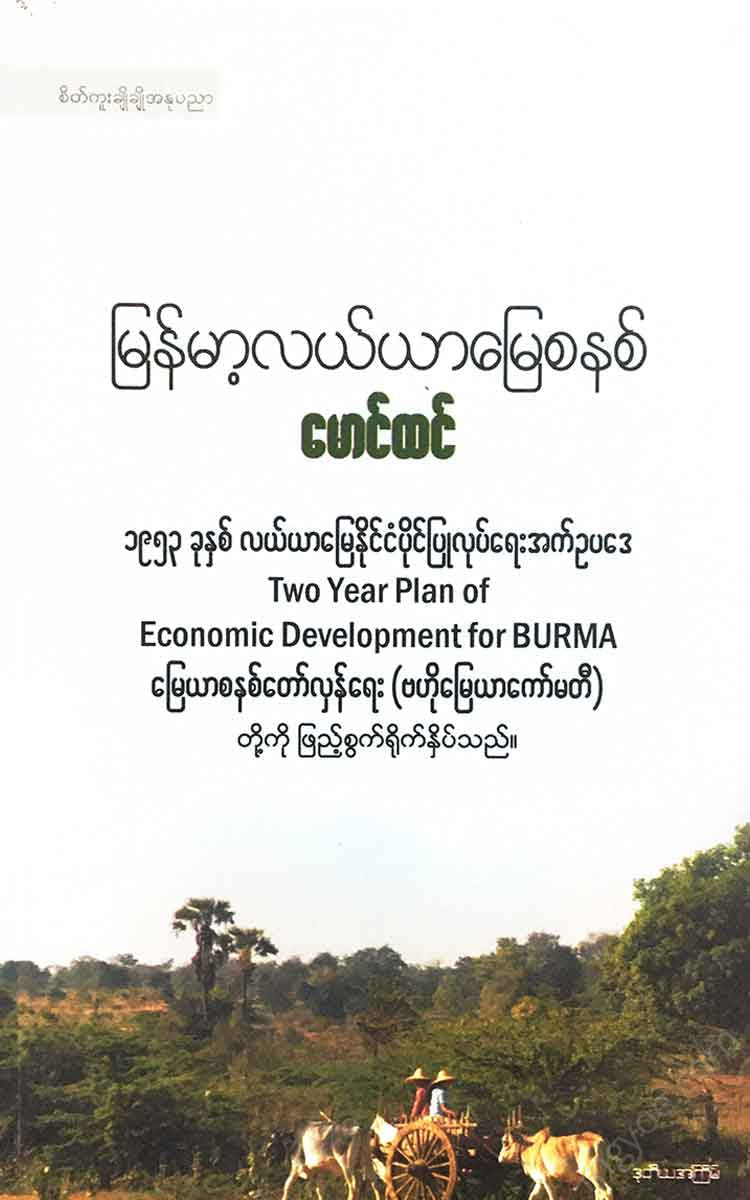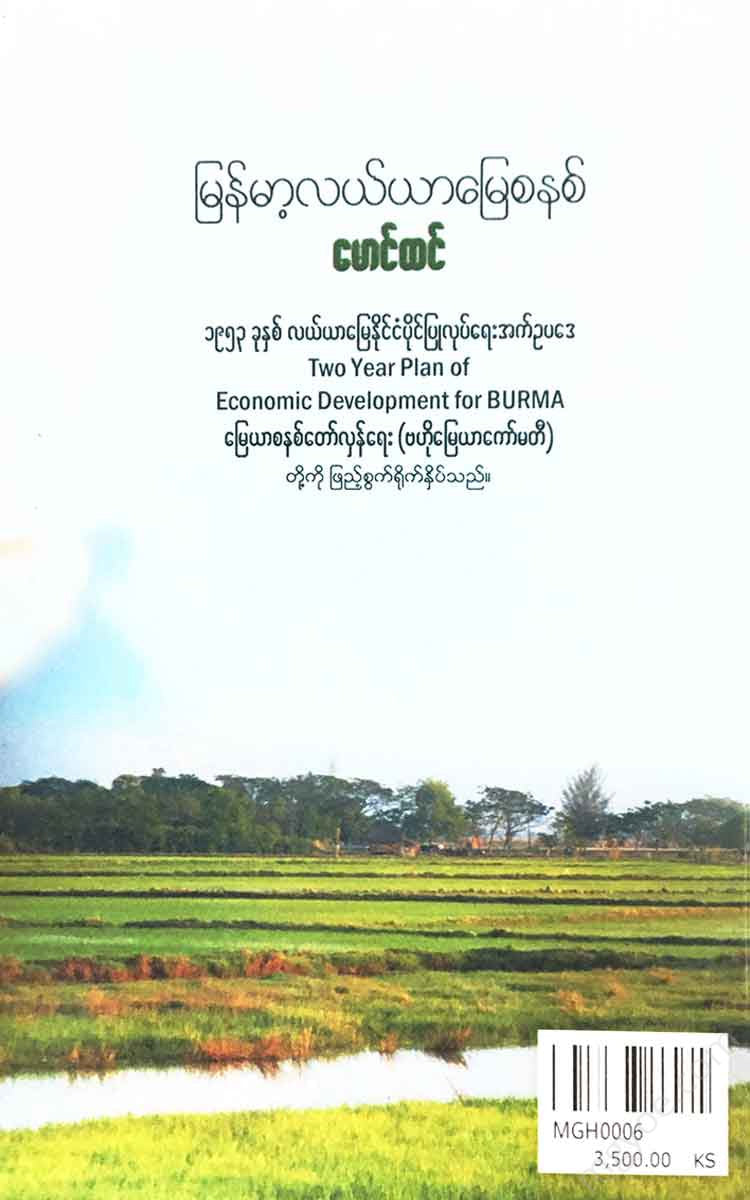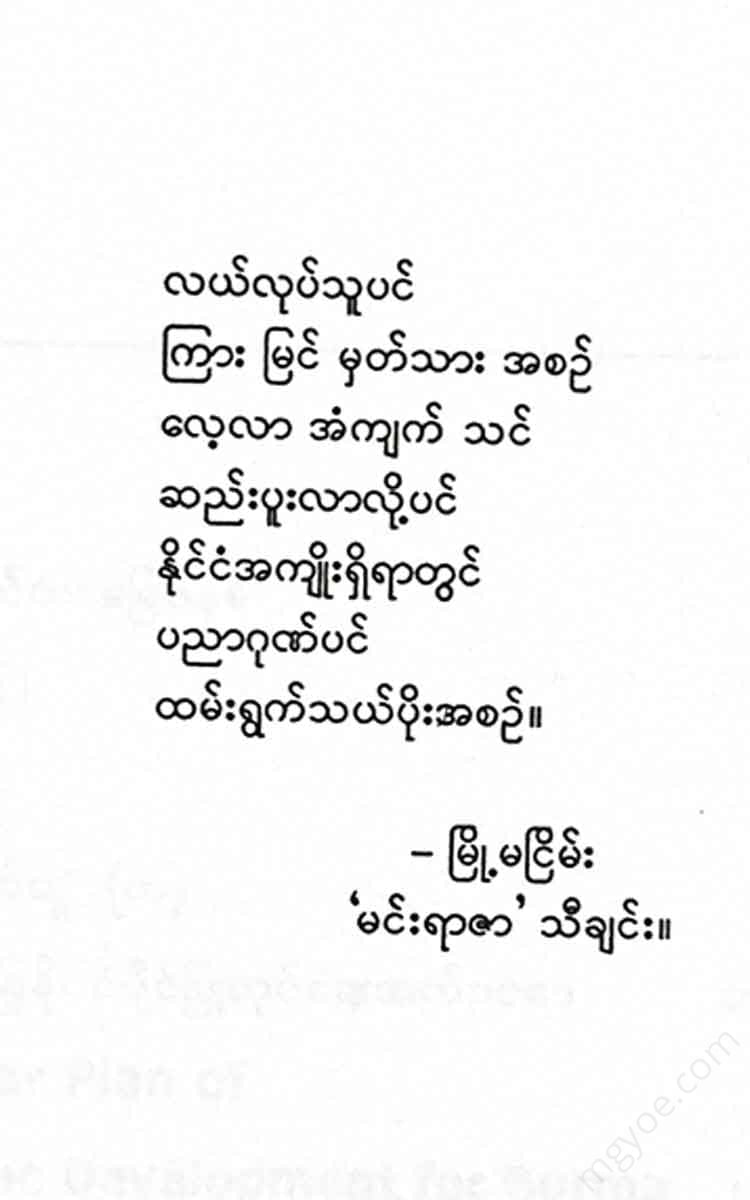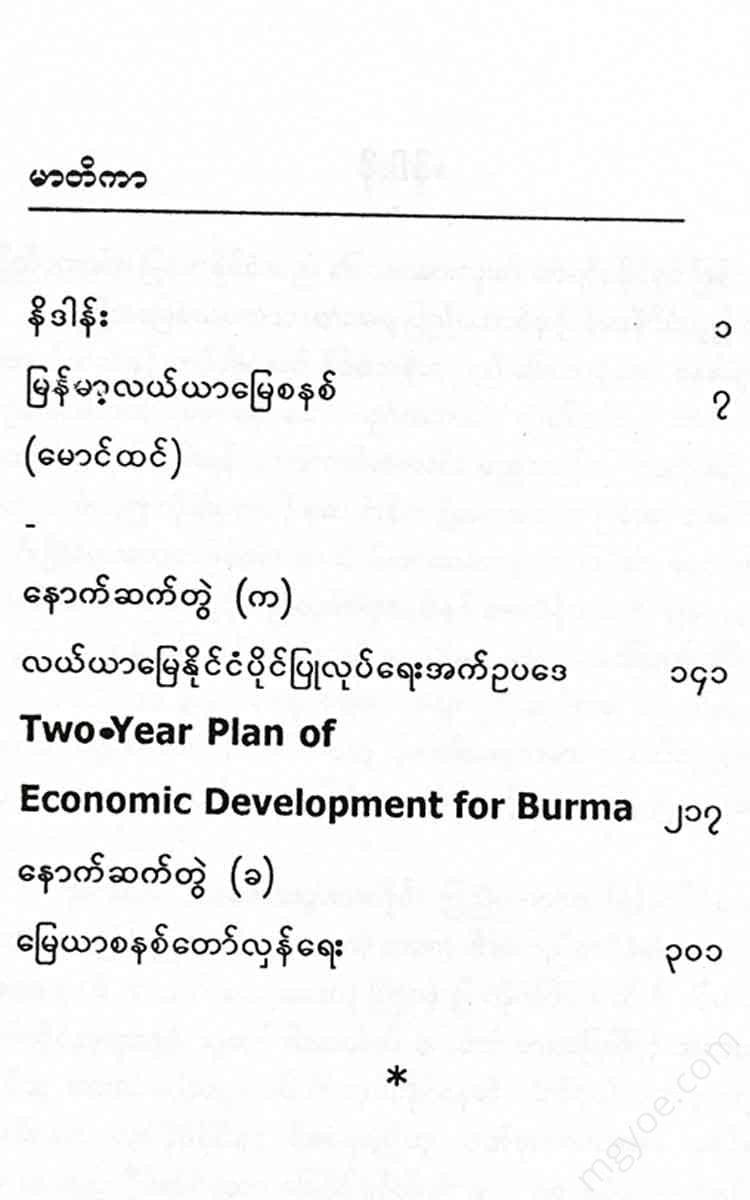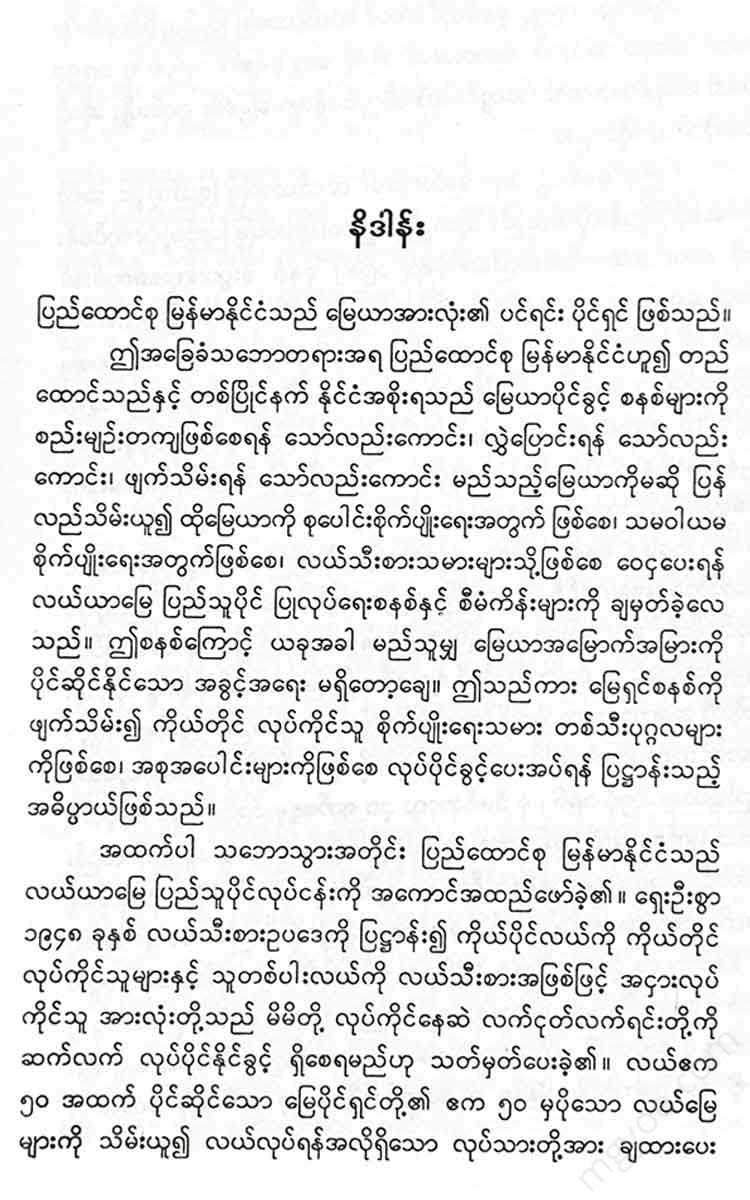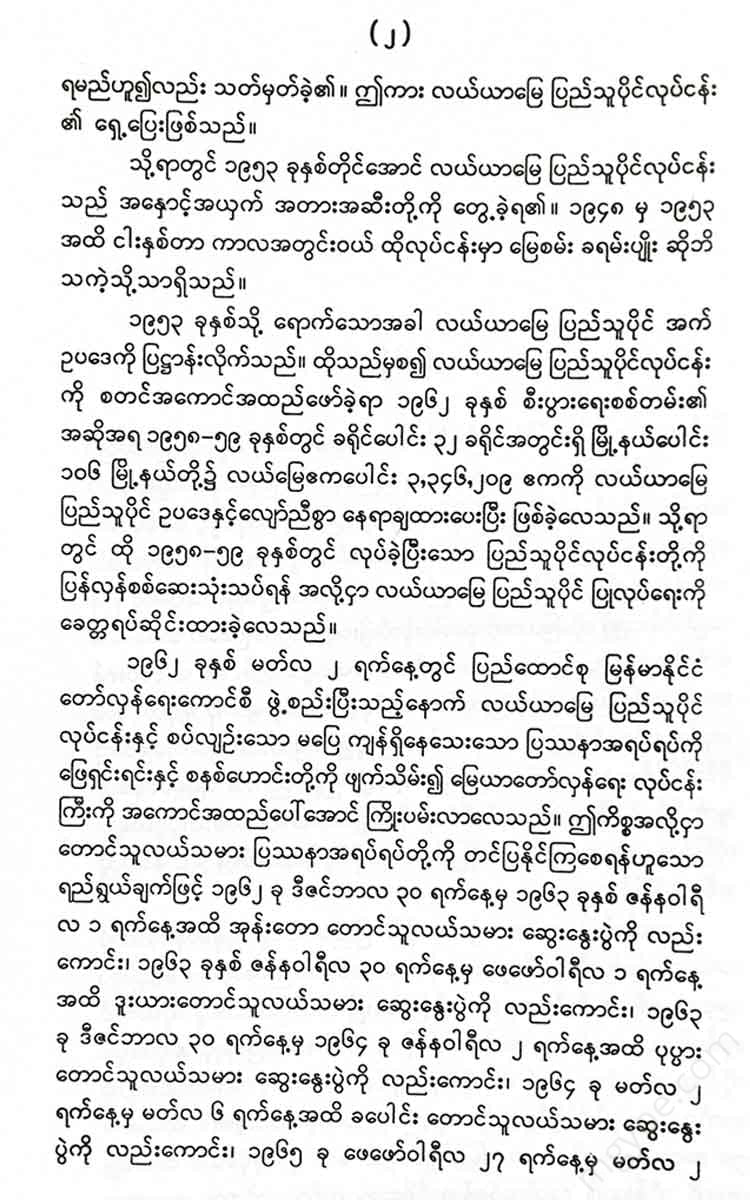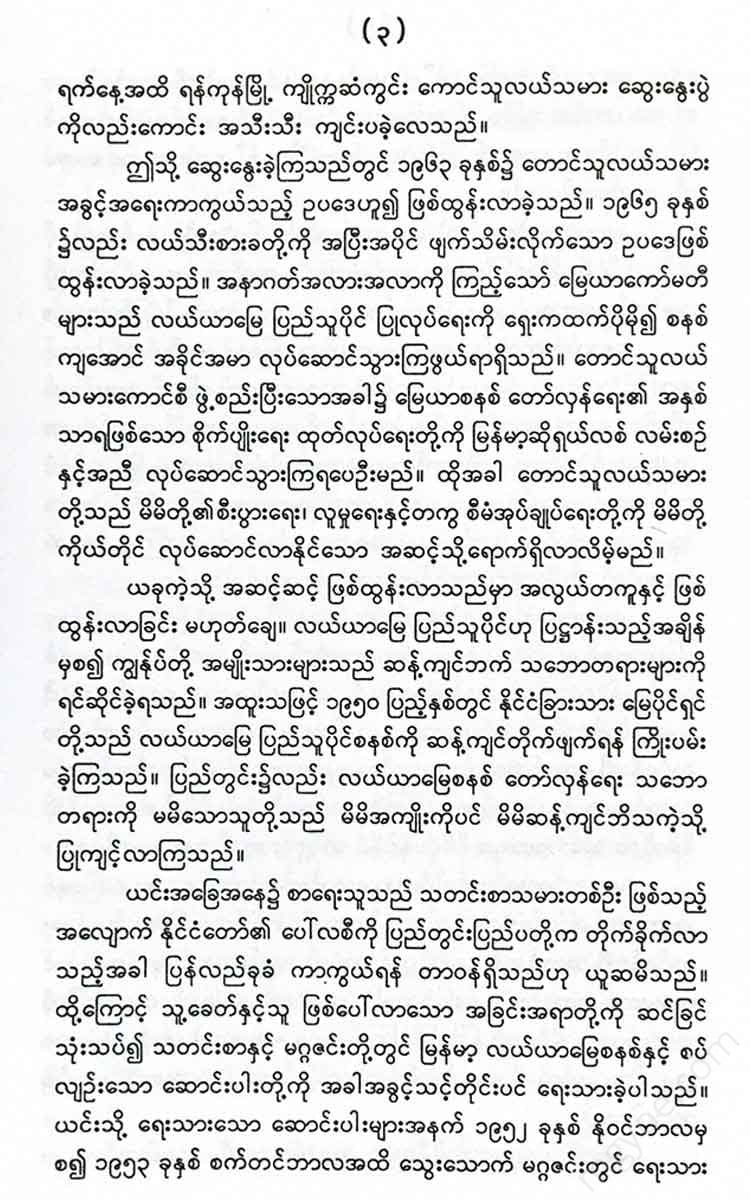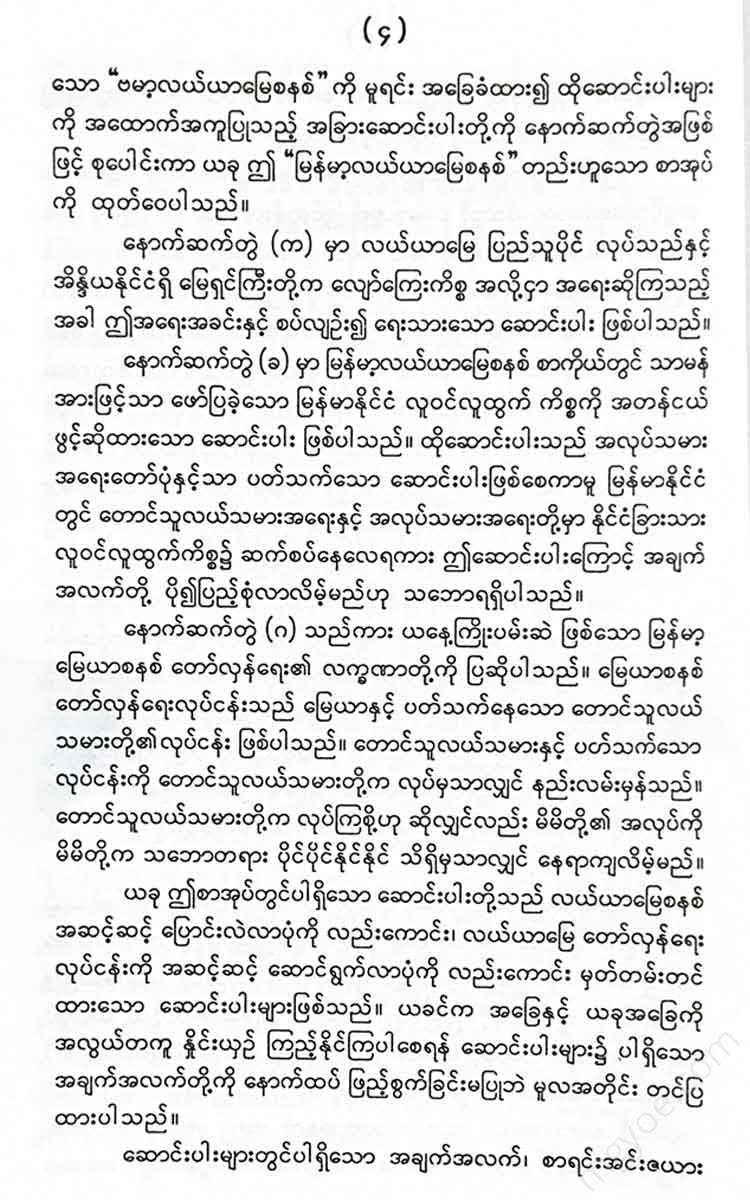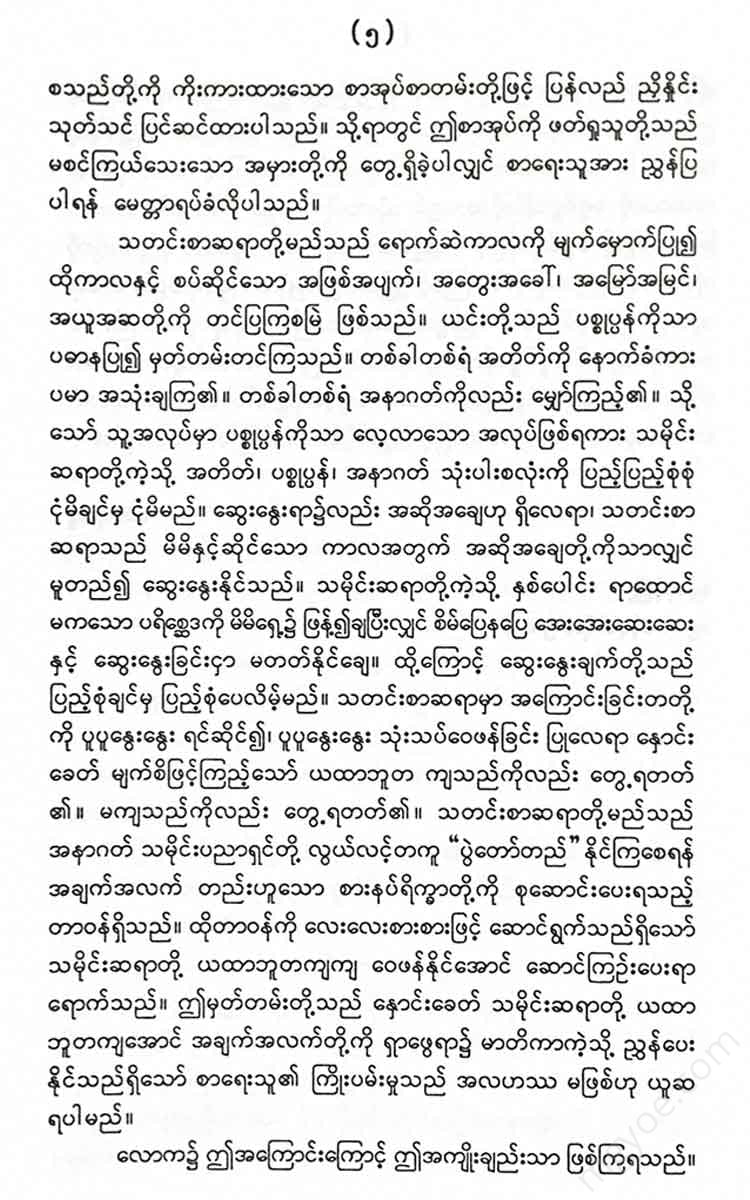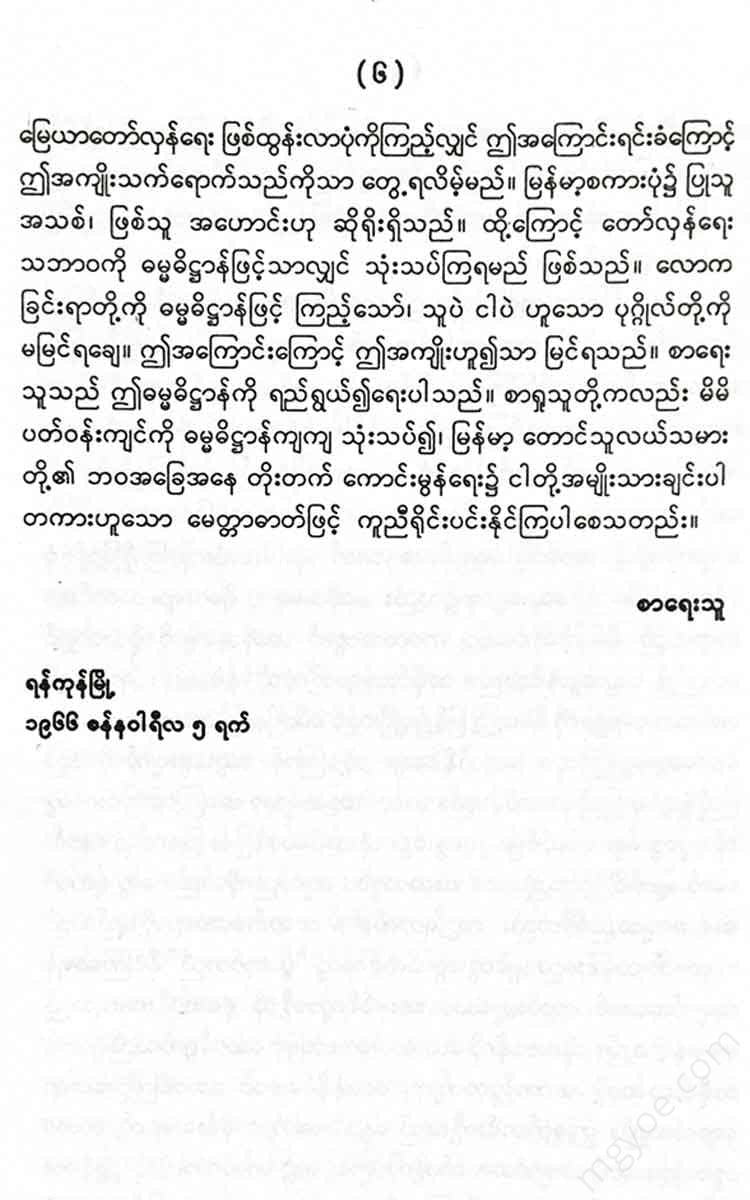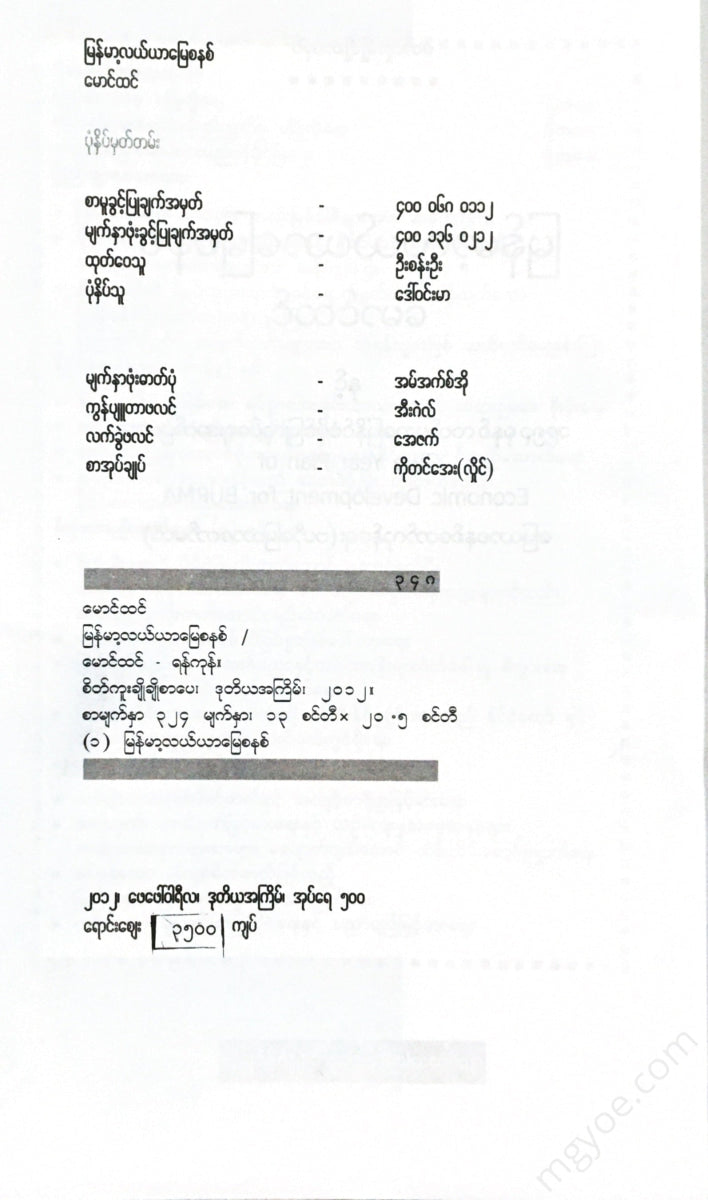စိတ်ကူးချိုချိုစာပေ
Maung Htin - Myanmar Agricultural Land System
Maung Htin - Myanmar Agricultural Land System
Couldn't load pickup availability
Politicians are shouting “land revolution,” administrators are shouting “land reform,” and farmers are shouting “prosperity for farmers.” The slogans of these three individuals may differ in their wording, but the reason for their slogans is the same.
The reason for this is the Burmese land system.
We are planning to improve our lives. In this planning, we cannot know how to act without knowing the true circumstances of our lives.
Therefore, in this free era, even farmers need to study their environment and the problems related to it.
Throughout history, when we were subjected to other people's lives, the farmers, on whom we all depend, had a desire to learn the truth about the causes, to shed their British, capitalist, and landlord prejudices, but they were not given the opportunity to study their own problems to fulfill that desire.
When I say this, I think some people will argue, "Who is restricting these farmers from studying? If a person has a brain, they can study as much as they have."
As soon as a person becomes a human being, his livelihood determines his destiny. On the basis of his livelihood, his health, education, and welfare are based. As soon as his livelihood becomes tight, the farmer can no longer care about his health. He cannot be interested in education. He can put welfare aside and put it aside for as long as he can.
Amidst the abundance of gold, silver, rice, and water, a farmer's life is a day-to-day existence. If he neglects even these three important things, where can he study the problems related to himself?
Therefore, in ancient times, farmers in Lower Burma would focus on catching crabs as soon as dawn broke. In Central Burma, they would be anxious to catch eels. In Upper Burma, they would think about catching eel.
In this way, their only environmental problems were crabs, eels, and turtles.
Therefore, they do not think about why the price of rice has fallen this year. They do not calculate why they cannot repay their debts despite the rice harvest. They do not investigate where the Chittagong, Uriya, and other people around them have come from.
"Ah... our world is as the British government designed it to be..."
The farmer complained like this. At first, they held on to the "everything is fine" ideology and bowed their heads. However, they gradually, unconsciously, began to rebel against the oppressive force that was falling on their backs. In the end, they could not bear the oppressive force and rose up.
Then the sound of the land revolution began to ring out. However, for us farmers, we need to distinguish between the meaning and the form of the land revolution.
In analyzing and criticizing the land system, we must look back. First, we need to examine what our traditional economic system was like. Because all the problems related to the land system that are emerging today are caused by the problems inherent in the agricultural economic system. Only by understanding the problems can we find the cure.
Before the British rule, the Burmese economy was based on agriculture, but it was not a barter economy like it is today. It was an economic system in which all domestic products were exchanged among the people. Therefore, having a barter economy was not important for the people. It was important to be able to produce food products domestically. For the farmer Maung Phyu, in addition to having enough rice to eat, he also needed to have enough productive labor to exchange as much rice as he wanted for sesame oil from the surrounding area.
Looking at the production sector, it was a matter of domestic food security. Therefore, for the farmers, agriculture is agriculture that is only for their own food security. The agricultural products that come out of Myanmar are only for Myanmar. This agricultural system is called Subsistence Agriculture by Western economists. In Myanmar, it is farming for domestic food security.
Farming for subsistence was not the same as farming for profit. The modern economy had not yet emerged, so the Burmese kings, even in collecting taxes, placed a premium on goods, based on a commodity-based economy.
If you look at the tax list of that time, you will find palm trees from Nga Tha Rok village, fenugreek from Magway, various flowers from Poppa Taung Kala, betel leaves from Dala, durian from Ye-Myeik-Dawei, thazin flowers from Taung Ngu, Pathein and Shwe Kyin, betel nuts from Rakhine, and white silk from Chin State.
In the ancient times, there were not many exploitation systems like this, and production was done only for subsistence, so the modern so-called landlord system and capitalism could not take root.
In fact, there was not much agriculture at that time. According to the records of British historians, at the time of the British occupation of Burma, Tanintharyi was a barren wilderness due to the Burma-Thailand War. Even Bago was described by British historians as a desert. In Upper Burma, however, agriculture was very developed and there were many settlements.
However, the agricultural system was a subsistence system, and there was domestic self-sufficiency. Although that era was called the era of monarchy, the nature of the ancient Burmese kings was not entirely the same as that of the Western landlords and capitalists. The nature of the emperor, who was intoxicated with power, was more evident.
When the British invaded Myanmar and began to establish foreign rule, the situation changed dramatically. Although the administrative system at that time was a monarchy, the administrative power that came down from Nay Pyi Taw was still vested in the respective town and village chiefs, and the townships and villages gained what is now called local self-government.
However, during the British rule, the power that was spread over the townships and villages was controlled by the central government in Yangon. To put it simply, during the reign of the Burmese king, the administrative power was transferred from the king to the townships and villages. When the British came, the administrative power of the townships and villages was concentrated in the central government headquarters. (Nowadays, what is being talked about as devolution of power to the local government is that the power that was concentrated in the central government should be distributed to the towns and villages and regions more than in the old way.) In ancient times, the king's life and property power was transferred to the chiefs of the towns and villages. Therefore, the chiefs of the towns and villages became "sword owners". Under the British rule, the central government was the only "sword owners".
As the administration changed, so did the economy. The British colonial army was accompanied by Indian nationals who supported the army. The reward for the retinue was a large amount of land in Rakhine and Tanintharyi. The British collected a tax of one mas, five mu, and one kyat per acre on these wild lands, and gave them as grants and land grants to the ethnic groups who helped the British along with the retinue.
